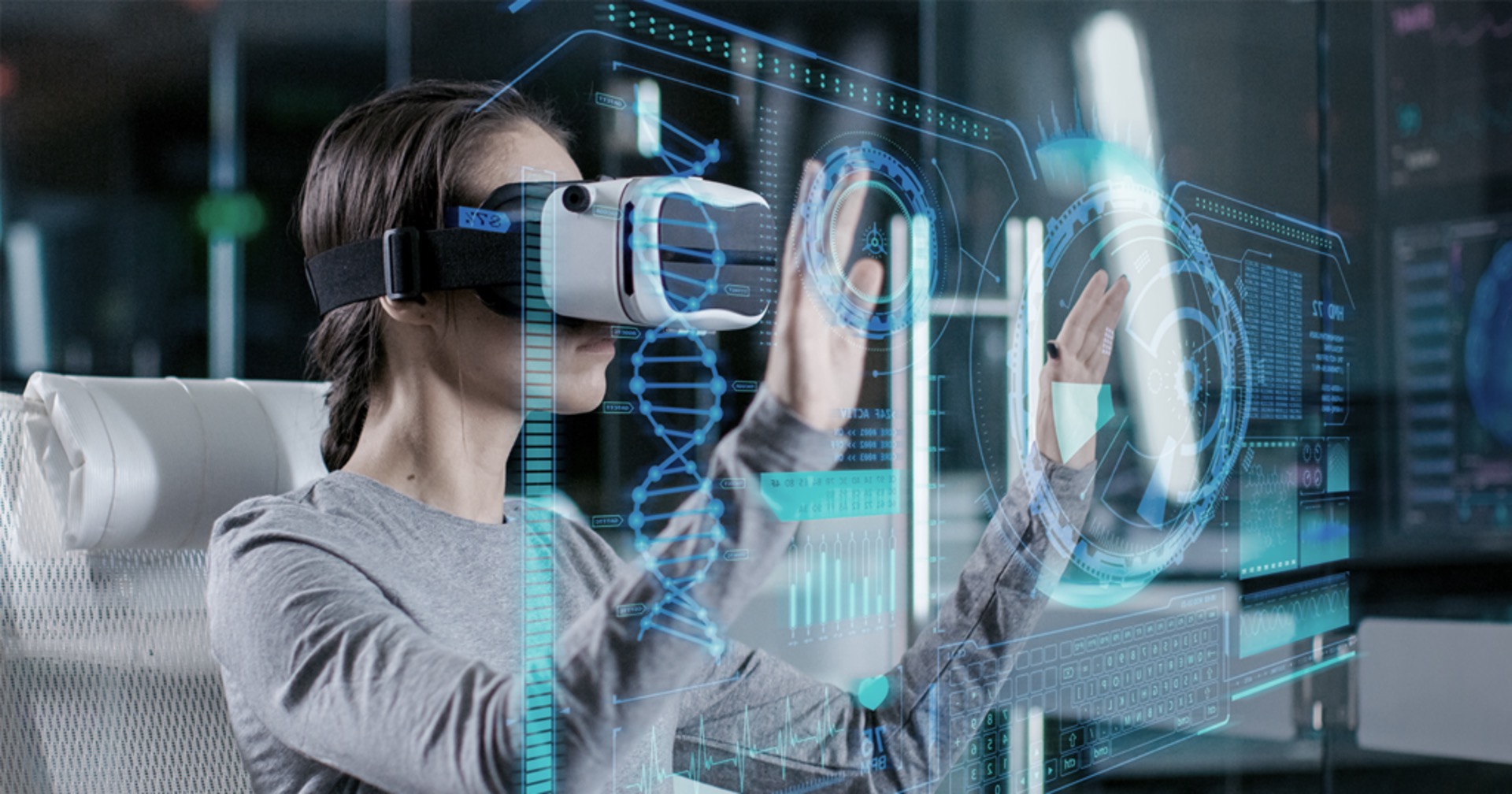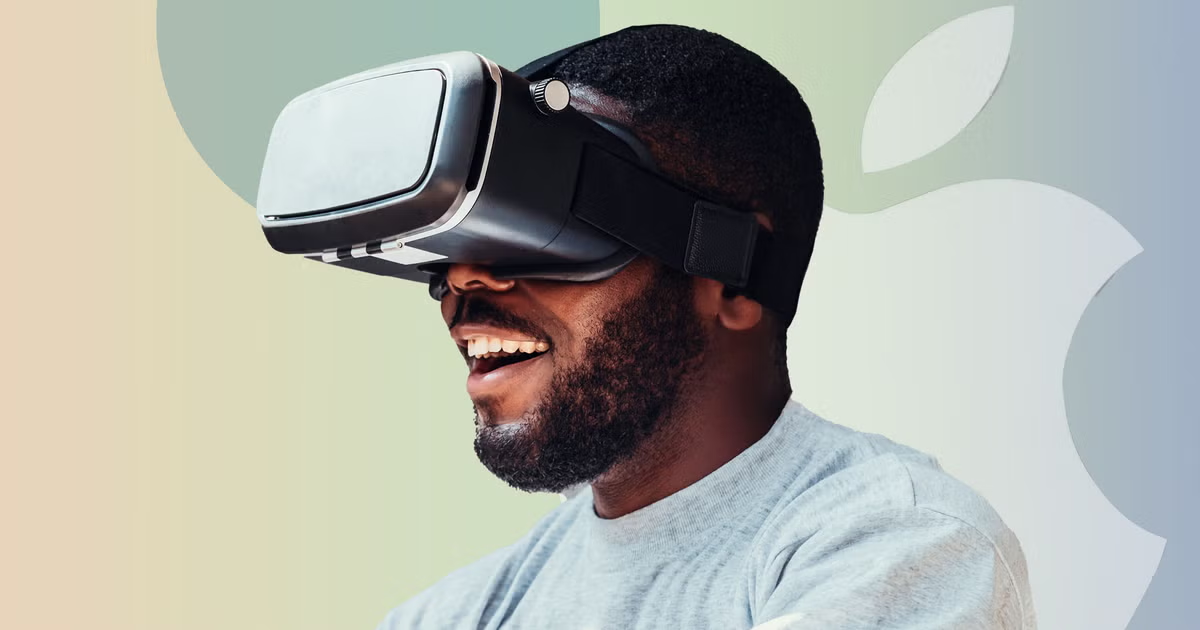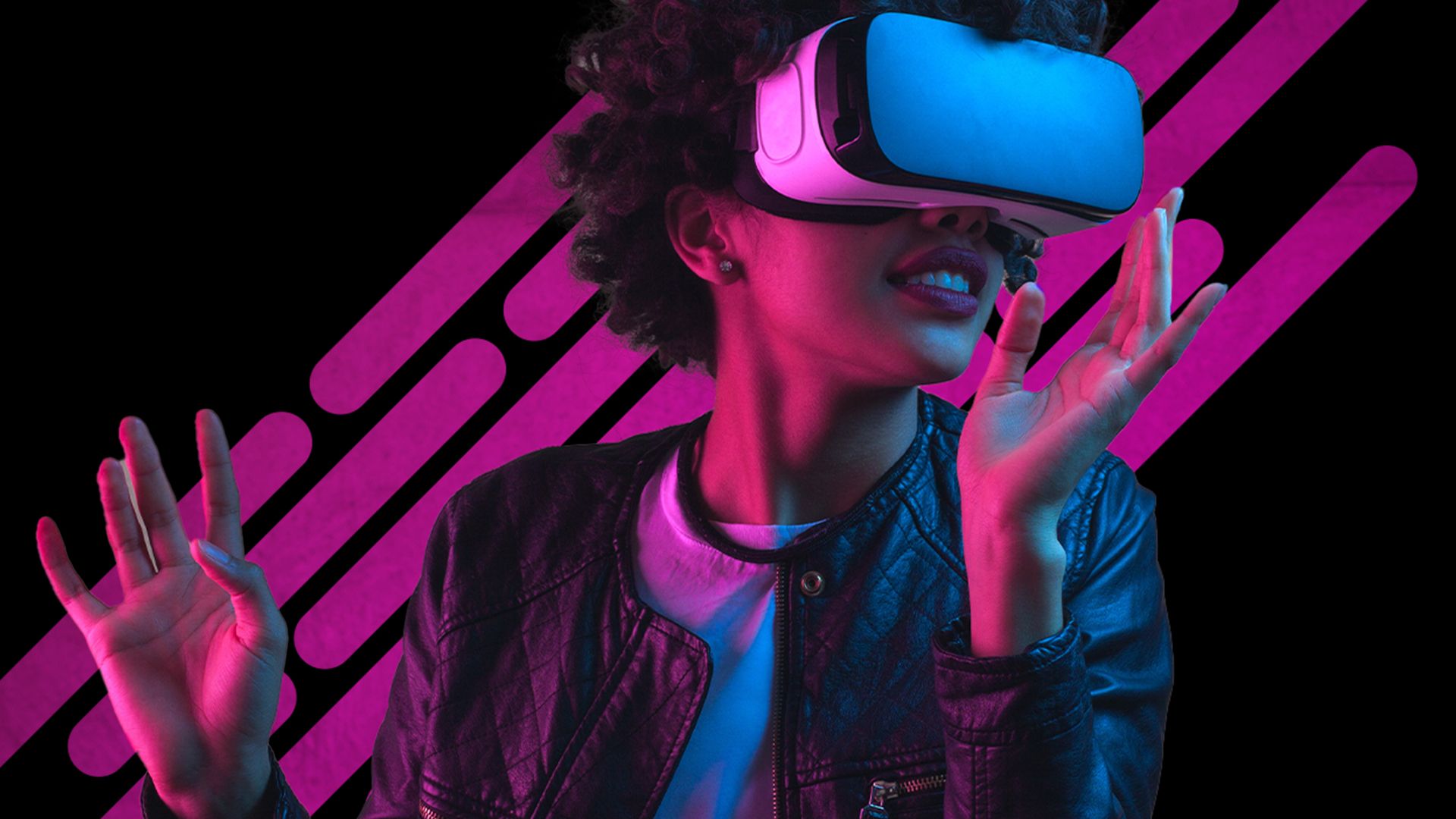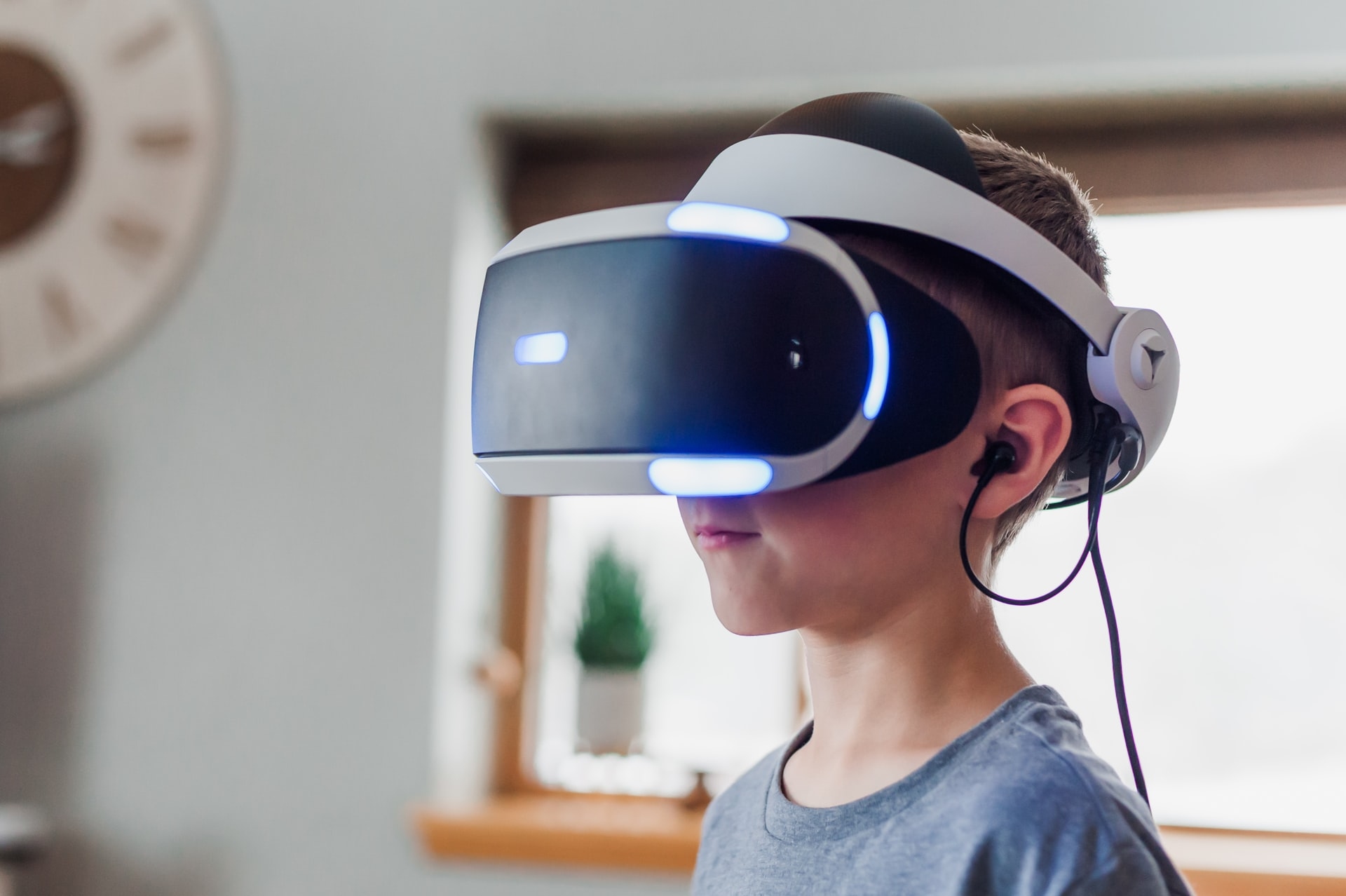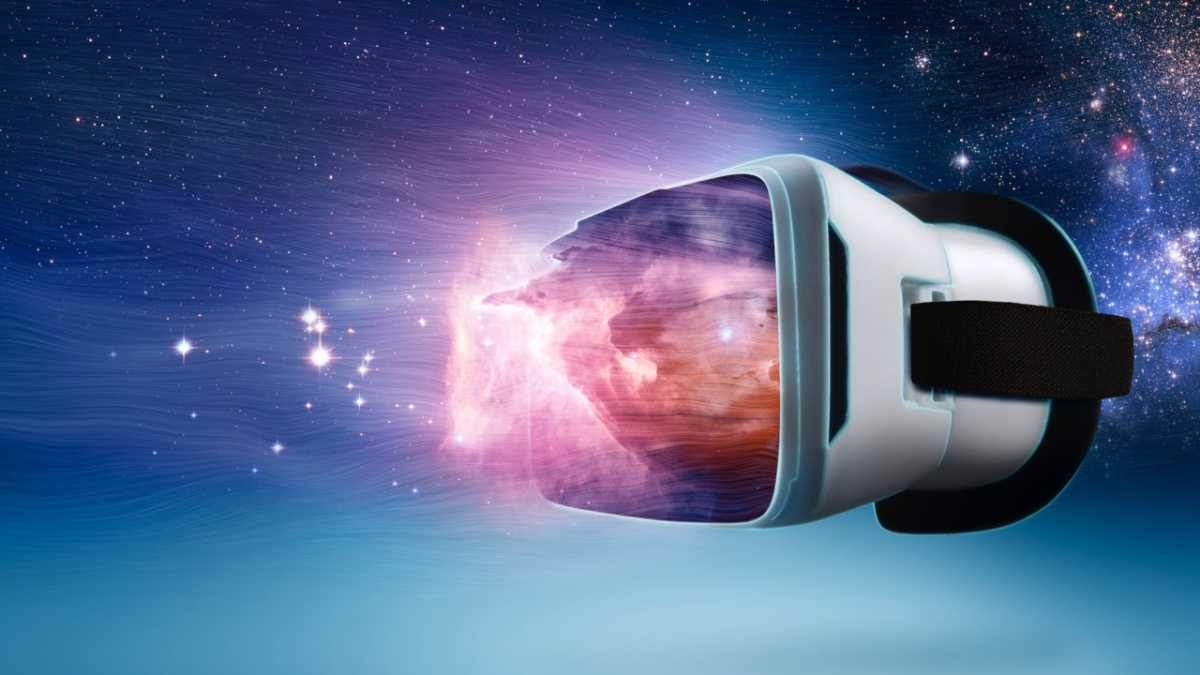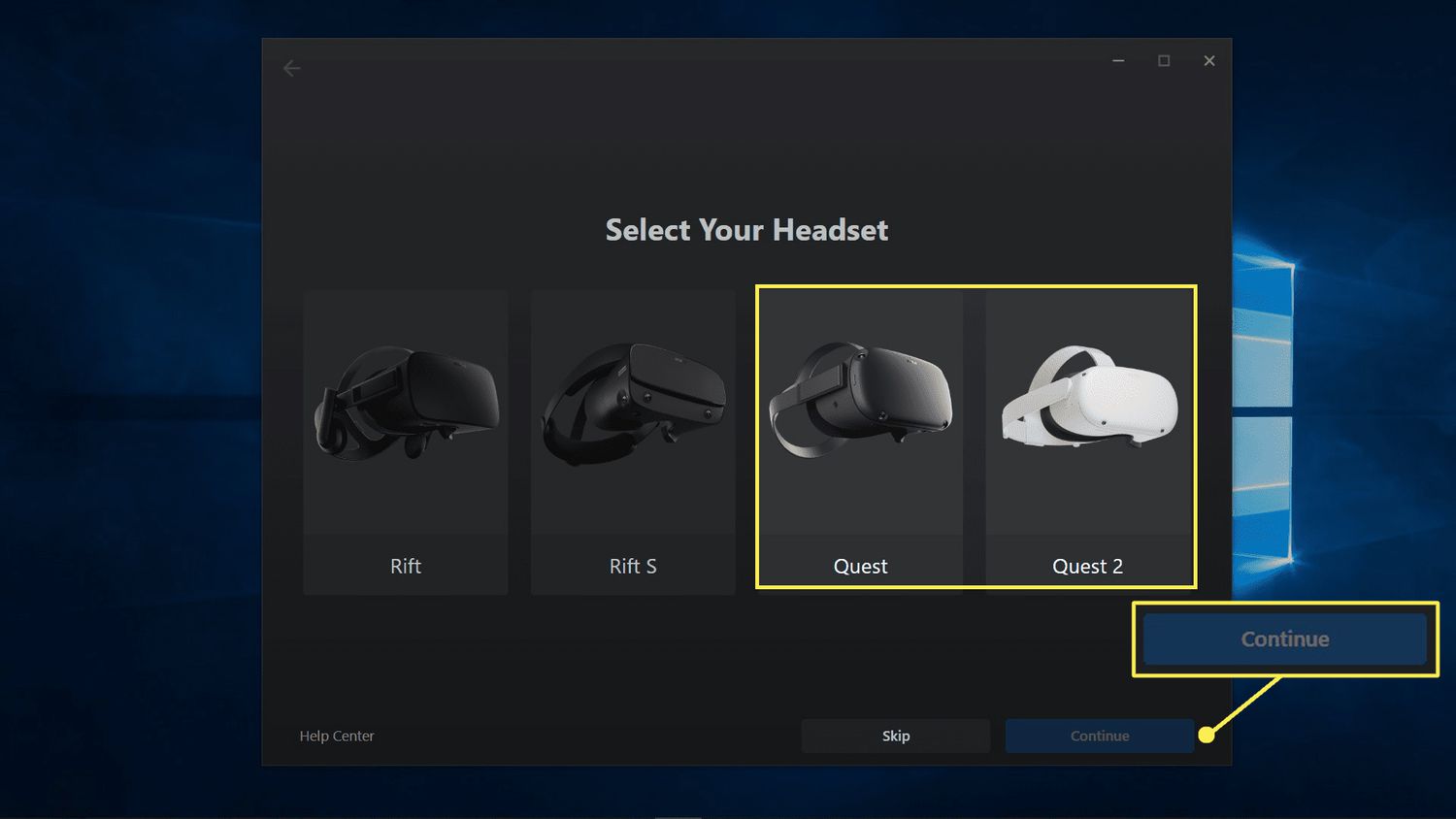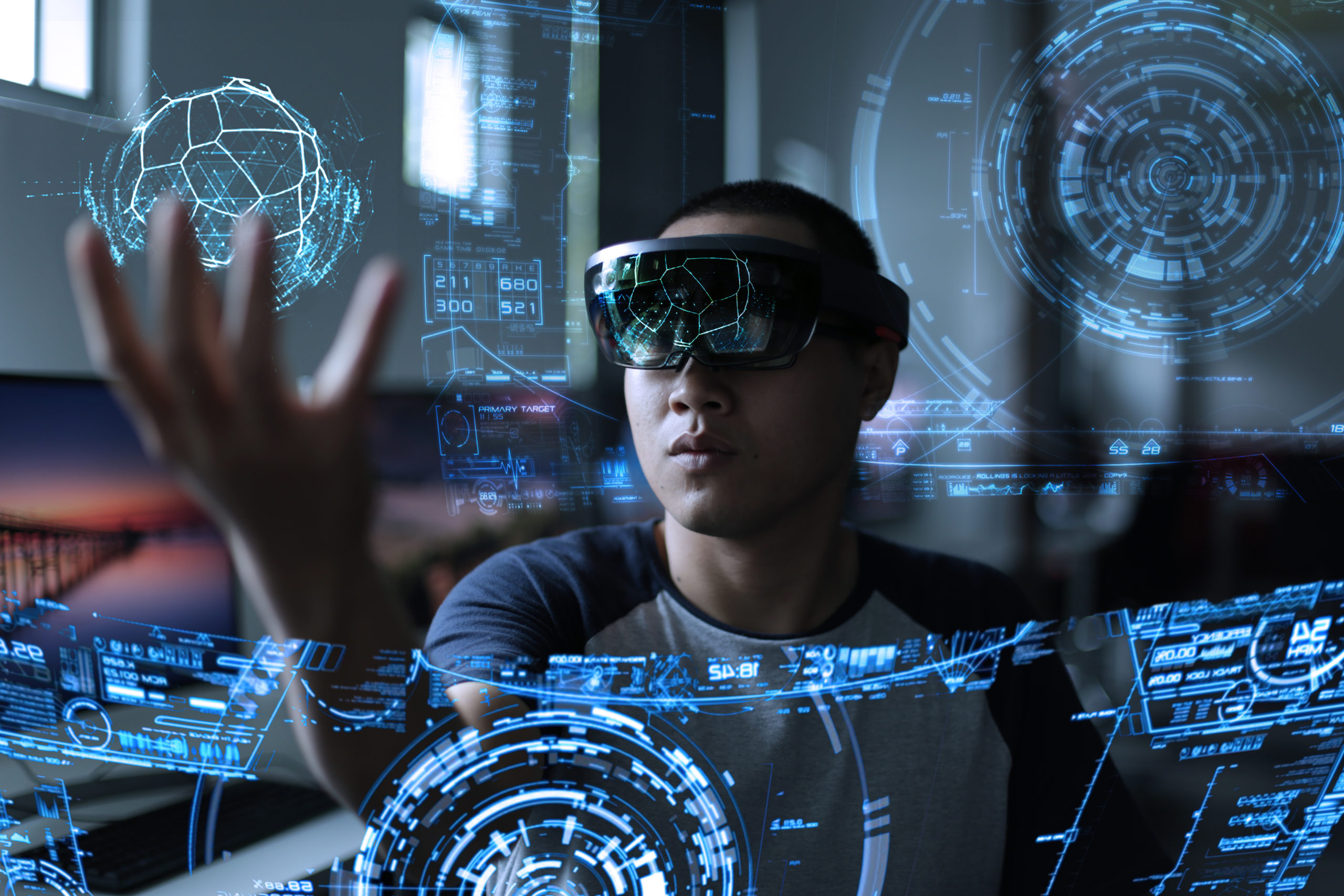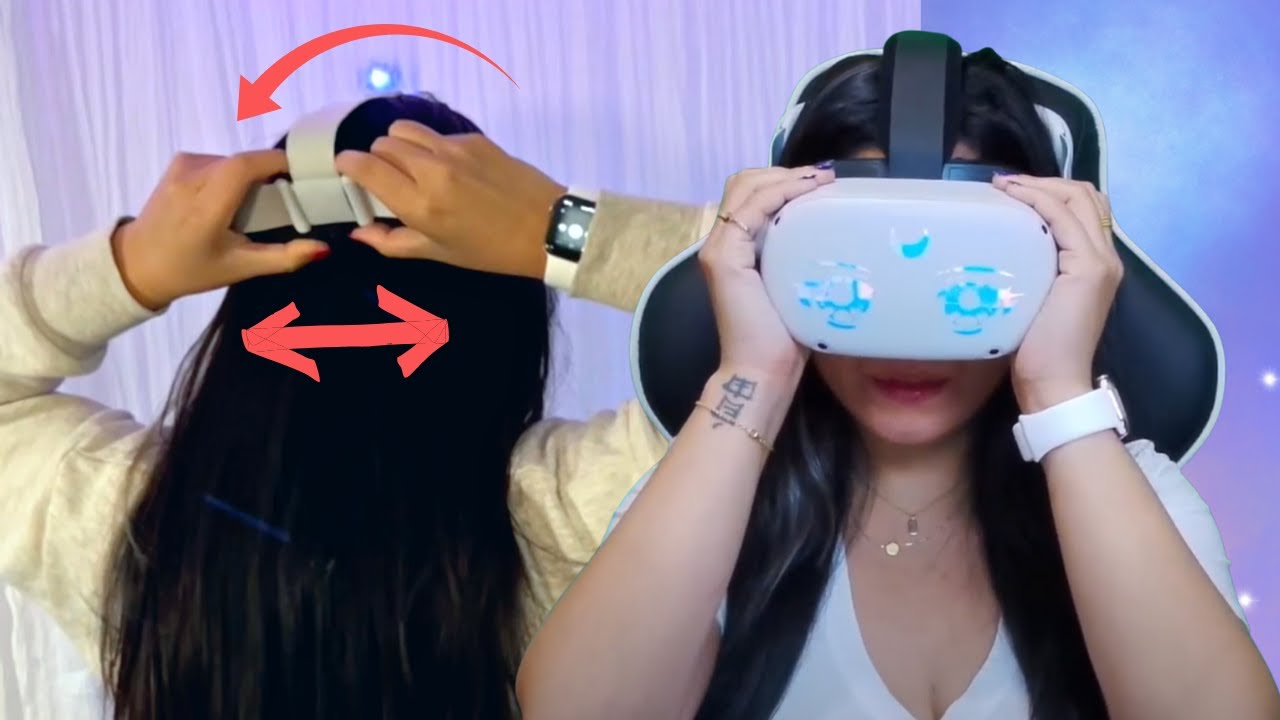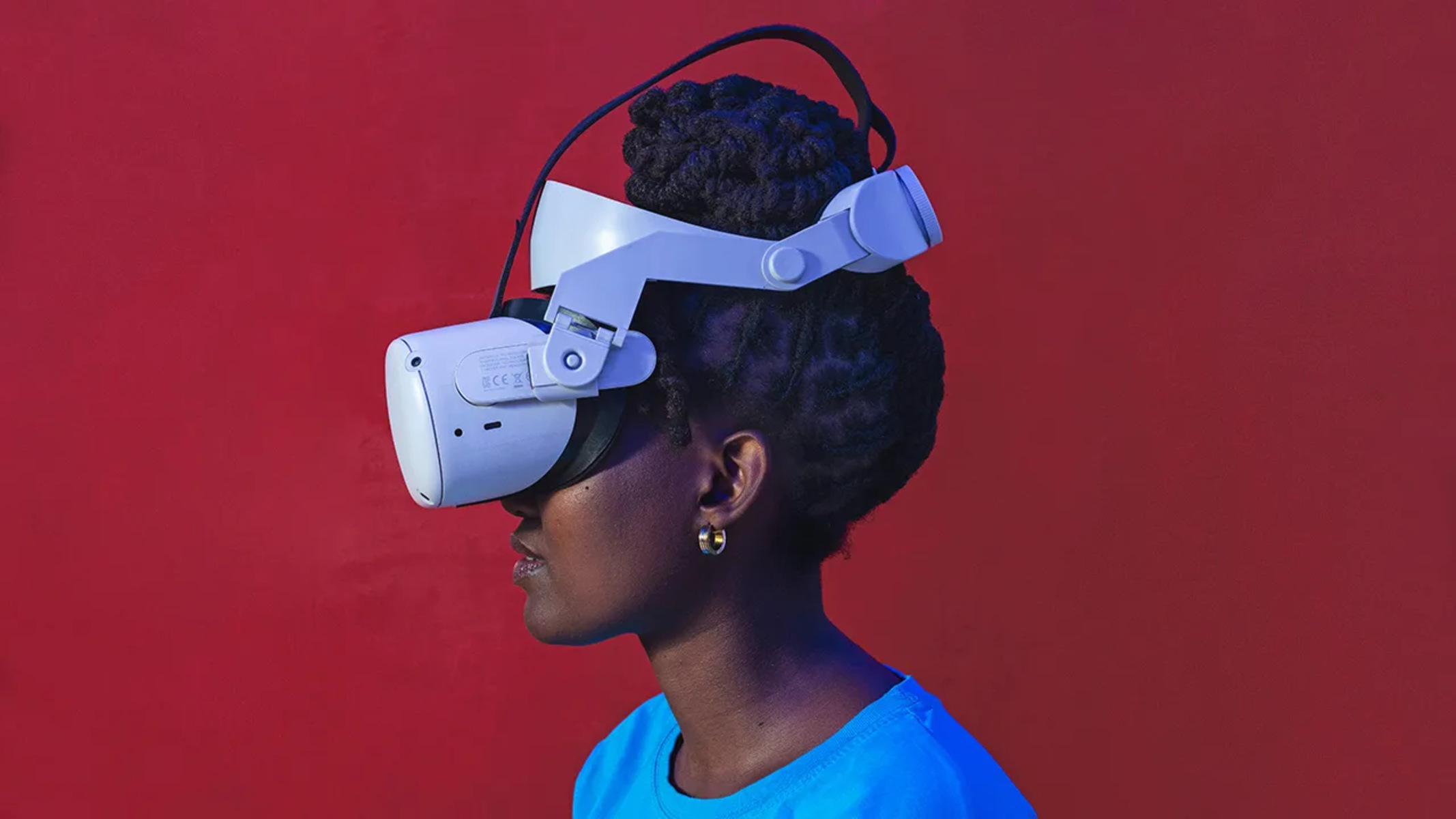Introduction
Virtual reality (VR) has revolutionized the way we experience digital content, offering immersive and interactive environments that blur the line between the physical and virtual worlds. At the heart of this groundbreaking technology are VR headsets, which serve as the gateway to these captivating digital realms. Understanding the mechanics behind VR headsets is crucial for grasping the intricacies of this cutting-edge technology.
From the stunning display and optics to the precise tracking and sensors, every component of a VR headset works in harmony to transport users to alternate realities. The input and controls, coupled with the audio and sound systems, further enhance the immersive experience, while comfort and ergonomics play a pivotal role in ensuring prolonged enjoyment without discomfort. By delving into the mechanics of VR headsets, we can gain a deeper appreciation for the engineering marvels that make virtual reality a tangible and exhilarating experience.
In this article, we will embark on a fascinating journey through the inner workings of VR headsets, exploring each component's function and contribution to the overall immersive experience. By unraveling the complexities of display and optics, tracking and sensors, input and controls, audio and sound, as well as comfort and ergonomics, we aim to provide a comprehensive understanding of how VR headsets operate. Let's dive into the captivating world of virtual reality and uncover the magic behind these technological marvels.
Display and Optics
The display and optics of a VR headset form the bedrock of its immersive capabilities, serving as the portal through which users are transported to mesmerizing virtual realms. At the core of this pivotal component lies the display technology, which is responsible for rendering lifelike visuals with exceptional clarity and depth. High-resolution displays, often in the form of liquid crystal displays (LCDs) or organic light-emitting diode (OLED) panels, are meticulously engineered to minimize motion blur and pixelation, ensuring a seamless and captivating visual experience.
Furthermore, the optics integrated into VR headsets play a crucial role in shaping the user's perception of the virtual environment. As users peer through the headset, the optics work in tandem to widen the field of view, creating a panoramic vista that envelops the user's vision. This immersive effect is achieved through the implementation of specialized lenses that refract and manipulate light, effectively mimicking the natural visual perception of the human eye. By strategically bending and focusing light rays, the lenses contribute to a sense of depth and dimension within the virtual space, heightening the overall sense of presence and realism.
Moreover, the concept of interpupillary distance (IPD) is integral to the optics of VR headsets. Recognizing that individuals have varying distances between their pupils, VR headsets are designed to accommodate this diversity through adjustable IPD settings. By aligning the virtual display with the user's unique IPD, the optics ensure that the visual content is presented in a manner that closely mirrors the natural binocular vision, enhancing comfort and visual fidelity for users across diverse demographics.
In addition to the display and optics, the concept of refresh rate plays a pivotal role in delivering a smooth and responsive visual experience within VR environments. The refresh rate, measured in hertz (Hz), dictates how many times per second the display refreshes its image. A higher refresh rate results in smoother motion and reduced motion sickness, thereby enhancing the overall comfort and immersion for users navigating virtual landscapes.
In essence, the display and optics of VR headsets combine cutting-edge display technology with precision-engineered optics to orchestrate an immersive visual symphony that transcends the boundaries of traditional screens. By seamlessly blending high-resolution displays, advanced optics, and customizable IPD settings, VR headsets elevate the art of visual storytelling, transporting users to captivating digital realms with unparalleled realism and immersion.
Tracking and Sensors
Tracking and sensors form the backbone of a VR headset's ability to synchronize the user's movements with the virtual environment, enabling seamless interaction and immersion. At the heart of this functionality lies a sophisticated network of sensors and tracking mechanisms designed to capture and interpret the user's motions in real time.
One of the key components in the tracking and sensor system is the inertial measurement unit (IMU), a fusion of accelerometers and gyroscopes that precisely monitor the user's head movements. By detecting changes in orientation and angular velocity, the IMU plays a pivotal role in tracking the user's head movements, allowing the virtual environment to dynamically adjust and respond to the user's actions.
In addition to the IMU, VR headsets often integrate external sensors, such as infrared cameras or laser-based systems, to further enhance positional tracking accuracy. These external sensors meticulously track the user's physical location within the designated play area, enabling seamless translation of real-world movements into the virtual space. This precise positional tracking is paramount in facilitating natural interactions within VR environments, empowering users to walk, crouch, and gesture with unparalleled accuracy and responsiveness.
Furthermore, the concept of inside-out tracking has emerged as a game-changing innovation in the realm of VR tracking technology. By embedding cameras directly within the VR headset, inside-out tracking empowers the device to spatially map the user's surroundings, effectively eliminating the need for external sensors or base stations. This approach not only streamlines the setup process but also fosters greater mobility and flexibility for users, as they can seamlessly navigate virtual environments without being tethered to fixed tracking systems.
Moreover, the integration of hand and gesture tracking sensors adds a layer of intuitive interaction to the VR experience. By employing advanced computer vision algorithms and depth-sensing technologies, these sensors can accurately capture the user's hand movements and gestures, allowing for natural and expressive interactions within virtual worlds. This heightened level of immersion and interactivity elevates the overall VR experience, enabling users to manipulate virtual objects and environments with remarkable precision and fluidity.
In essence, the intricate interplay between IMUs, external sensors, inside-out tracking, and hand tracking technologies harmoniously converge to create a seamless and immersive user experience within virtual reality. By leveraging these advanced tracking and sensor systems, VR headsets empower users to seamlessly bridge the gap between the physical and virtual realms, unlocking a new dimension of interactive and captivating digital experiences.
Input and Controls
The realm of virtual reality (VR) is intricately woven with the concept of input and controls, serving as the bridge that connects users with the immersive digital landscapes that unfold before them. At the core of this pivotal component lies a diverse array of input mechanisms and control interfaces, each meticulously designed to empower users with intuitive and responsive interactions within the virtual realm.
One of the primary input methods embraced by VR headsets is motion controllers, which are equipped with an assortment of sensors, including accelerometers and gyroscopes, to accurately capture the user's hand movements and gestures. These controllers, often wielded in each hand, enable users to seamlessly manipulate and interact with virtual objects, imbuing the VR experience with a tangible sense of presence and agency. Furthermore, the integration of haptic feedback mechanisms within these controllers adds a tactile dimension to the user's interactions, providing nuanced sensory cues that heighten the overall immersion and realism.
Voice commands represent another compelling avenue for input within VR environments, leveraging advanced speech recognition technology to interpret and execute verbal instructions from users. By harnessing the power of natural language processing and voice recognition algorithms, VR headsets can empower users to navigate menus, execute commands, and engage in virtual conversations with remarkable ease and fluidity. This seamless integration of voice input not only enhances accessibility for users but also fosters a more natural and intuitive mode of interaction within the virtual space.
Moreover, hand tracking technology has emerged as a transformative input modality, enabling users to directly utilize their bare hands to interact with virtual environments. By leveraging depth-sensing cameras and sophisticated computer vision algorithms, VR headsets can accurately capture and interpret the user's hand movements and gestures, allowing for intuitive manipulation of virtual objects and interfaces. This hands-on approach to interaction imbues the VR experience with a heightened sense of direct engagement, empowering users to seamlessly navigate and interact within digital realms.
In addition to these input modalities, VR headsets often incorporate traditional input interfaces, such as buttons, triggers, and touch-sensitive surfaces, to provide users with versatile and responsive control mechanisms. These tactile input methods enable users to execute precise actions, navigate menus, and engage in dynamic gameplay within VR environments, fostering a seamless fusion of physical and digital interactions.
In essence, the convergence of motion controllers, voice commands, hand tracking, and traditional input interfaces within VR headsets cultivates a rich tapestry of interactive possibilities, empowering users to fluidly and intuitively engage with virtual worlds. By embracing a diverse array of input and control mechanisms, VR headsets transcend the boundaries of conventional user interfaces, ushering in a new era of immersive and interactive digital experiences.
Audio and Sound
The realm of virtual reality (VR) transcends visual immersion, embracing a multi-sensory approach that encompasses the auditory realm through intricate audio and sound systems. Within VR headsets, audio plays a pivotal role in shaping the user's perception of virtual environments, fostering a rich and immersive sonic landscape that complements the visual experience.
At the core of the audio experience within VR headsets lies spatial audio technology, a sophisticated approach that leverages three-dimensional soundscapes to emulate the perception of sound in physical space. By meticulously simulating the behavior of sound waves in relation to the user's position and orientation, spatial audio engulfs users in a captivating auditory environment where sounds emanate from specific directions and distances. This spatial fidelity not only enhances immersion but also contributes to a heightened sense of presence within virtual worlds, as users can acutely discern the spatial origin of sounds, fostering a deeper connection to the digital environment.
Furthermore, VR headsets often integrate binaural audio technology, which replicates the natural auditory cues and nuances perceived by the human ear. By capturing sound with remarkable precision and delivering it through stereo headphones, binaural audio creates a compelling illusion of three-dimensional sound, effectively transporting users into a meticulously crafted sonic landscape. This heightened level of audio realism enriches the overall VR experience, fostering a sense of auditory presence that seamlessly aligns with the visual and interactive elements of virtual environments.
In addition to spatial and binaural audio technologies, VR headsets embrace dynamic audio processing algorithms that adapt to the user's movements and interactions within virtual spaces. These algorithms dynamically adjust the spatial characteristics and acoustic properties of sounds in real time, ensuring that the auditory experience remains synchronized with the user's actions and environmental changes. Whether it's the subtle rustling of leaves as the user traverses a virtual forest or the reverberating echoes within a digital cavern, dynamic audio processing adds a layer of responsiveness and realism to the auditory fabric of VR environments.
Moreover, the integration of positional audio cues within VR headsets further enhances the sense of spatial awareness and immersion. By accurately rendering audio sources based on their relative position to the user, these positional audio cues enable users to instinctively locate and engage with virtual sounds, heightening the overall sense of presence and interactivity within the digital realm.
In essence, the marriage of spatial audio, binaural audio, dynamic audio processing, and positional audio cues within VR headsets orchestrates a symphony of immersive soundscapes that harmoniously intertwine with the visual and interactive elements of virtual reality. By embracing a multi-dimensional approach to audio and sound, VR headsets elevate the auditory experience, enveloping users in captivating sonic realms that breathe life into digital landscapes, transcending the boundaries of traditional audiovisual experiences.
Comfort and Ergonomics
Comfort and ergonomics stand as pillars of paramount importance in the design and functionality of virtual reality (VR) headsets, profoundly influencing the user's overall experience and prolonged engagement within immersive digital realms. The seamless fusion of innovative design principles and ergonomic considerations culminates in a VR headset that not only transports users to captivating virtual environments but also ensures sustained comfort and usability.
The weight distribution of a VR headset plays a pivotal role in mitigating discomfort during extended usage sessions. By strategically positioning the internal components and battery systems, VR headset manufacturers strive to achieve optimal weight distribution, preventing undue strain on the user's neck and head. Moreover, the implementation of lightweight materials and balanced construction further contributes to a harmonious weight distribution, fostering prolonged usage without inducing discomfort or fatigue.
Ventilation and heat management represent critical facets of the comfort and ergonomics paradigm within VR headsets. The integration of efficient ventilation systems and heat dissipation mechanisms serves to mitigate the buildup of heat within the headset, ensuring that users remain cool and comfortable throughout their VR experiences. By leveraging advanced airflow designs and breathable materials, VR headsets strive to create a conducive environment that minimizes heat accumulation, thereby enhancing comfort and usability.
Adjustability and customization emerge as key tenets in the pursuit of ergonomic excellence within VR headsets. The inclusion of adjustable headbands, cushioned interfaces, and customizable straps empowers users to tailor the fit and feel of the headset to their unique preferences and anatomical nuances. This personalized approach to ergonomics not only enhances comfort but also fosters a sense of individualized immersion, catering to users with diverse head shapes and sizes.
Furthermore, the integration of vision correction mechanisms within VR headsets addresses the diverse visual needs of users, ensuring that individuals with varying prescriptions can partake in immersive VR experiences without the need for external corrective lenses. This inclusive approach to vision correction underscores the commitment to ergonomic accessibility, allowing users to seamlessly engage with virtual environments while maintaining visual clarity and comfort.
In essence, the meticulous attention to comfort and ergonomics within VR headsets reflects a dedication to fostering immersive experiences that transcend mere visual and interactive engagement. By harmonizing weight distribution, ventilation, adjustability, and vision correction, VR headsets strive to create an ergonomic oasis where users can lose themselves in captivating digital realms without sacrificing comfort or usability.
Conclusion
In conclusion, delving into the mechanics of virtual reality (VR) headsets unveils a tapestry of engineering marvels that converge to usher users into captivating digital realms. From the intricate interplay of display and optics, which orchestrate immersive visual symphonies, to the sophisticated tracking and sensor systems that synchronize real-world movements with virtual environments, every component of a VR headset contributes to a seamless and captivating user experience.
The fusion of input and controls within VR headsets empowers users with diverse and intuitive interaction modalities, spanning from motion controllers and voice commands to hand tracking technologies, fostering a rich tapestry of interactive possibilities. Moreover, the integration of spatial audio, binaural audio, and dynamic audio processing within VR headsets elevates the auditory experience, enveloping users in captivating sonic realms that harmoniously intertwine with the visual and interactive elements of virtual reality.
Furthermore, the relentless pursuit of comfort and ergonomics within VR headsets underscores a commitment to sustained usability and immersive engagement, ensuring that users can lose themselves in captivating digital realms without sacrificing comfort or accessibility.
By unraveling the complexities of VR headset mechanics, we gain a deeper appreciation for the technological symphony that underpins the immersive experiences they offer. As VR technology continues to evolve, the relentless pursuit of innovation and user-centric design principles will undoubtedly propel the realm of virtual reality into uncharted frontiers, unlocking new dimensions of immersive and interactive digital experiences for users around the globe.







